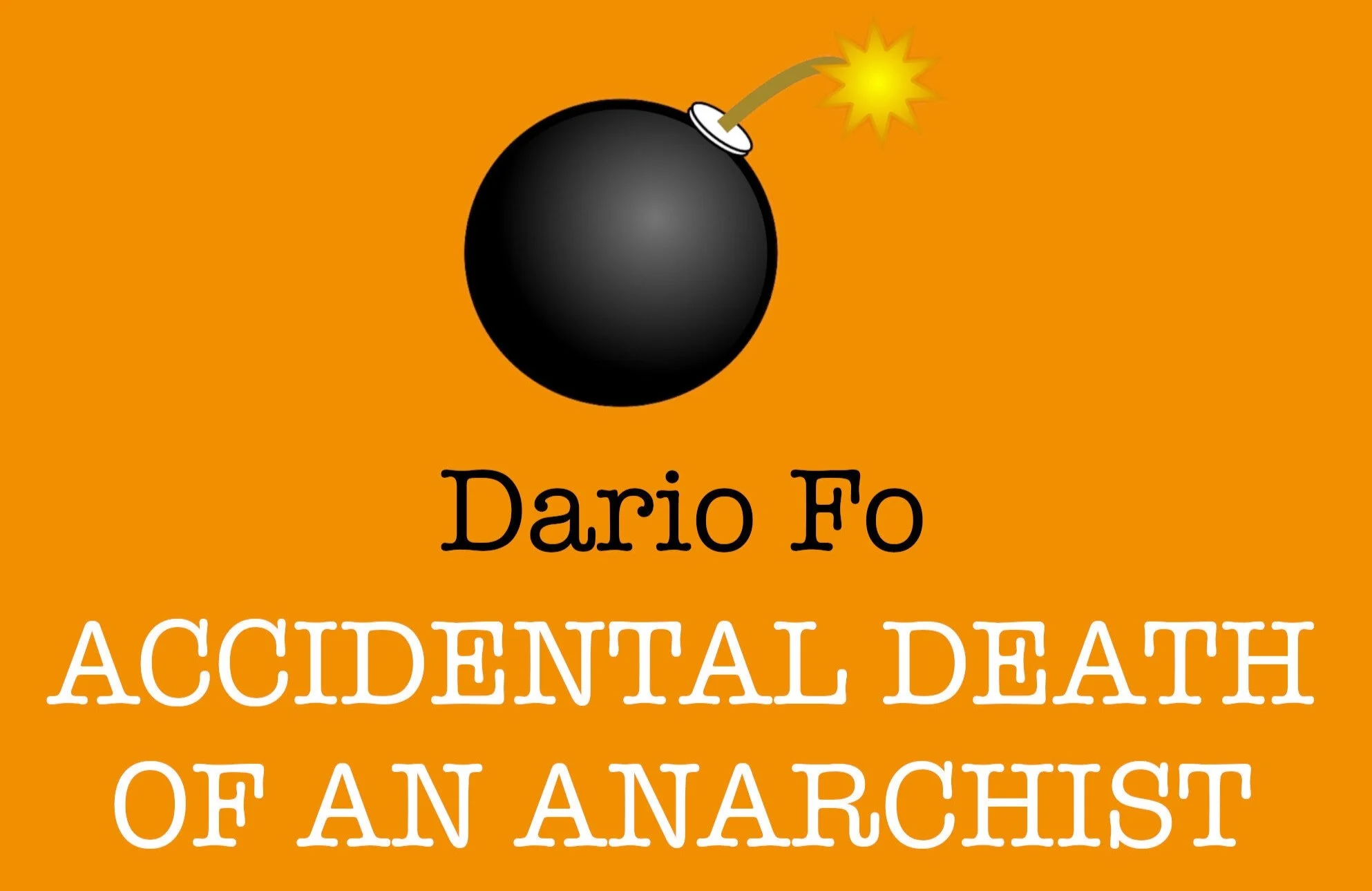Dario Fo’s ‘Accidental Death of an Anarchist’
Explored Through the Lens of Commedia dell’Arte
Dario Fo’s Accidental Death of an Anarchist is a masterful work of political farce, blending biting satire with physical comedy to expose systemic corruption and authoritarian abuse. While the play is certainly not Commedia dell’Arte, the centuries-old Italian comedic tradition resonates throughout Fo’s writing and performance style. Exploring the parallels between the rhythms, gestures, and physicality of Fo’s characters and the maschere (stock types) of Commedia offers valuable insights into the play’s humour and theatricality. By drawing on these connections, students can deepen their understanding of the mechanics of Fo’s comedy and develop a rich vocabulary to articulate how they would heighten the comedic elements in performance.
Fo’s Comic Heritage and Commedia dell’Arte
To understand Dario Fo’s connection to Commedia dell’Arte, it’s essential to view it not as an isolated influence but as part of a broader continuum of farcical and satirical comedy that stretches back to ritual and carnival traditions. For Fo, Commedia dell’Arte represents just one phase in this ongoing lineage – a bridge between the medieval street performers who came before and the radical, politically charged theatre movements that followed. His true artistic roots lie with these medieval giullari – itinerant performers who blended acting, music, acrobatics, and sharp social commentary, entertaining crowds while subtly challenging authority.[1]
Although Fo came late to the formal study of Commedia dell’Arte, he was surprised to find that his own practice – rooted in variety theatre, mime and direct audience engagement – had long mirrored its techniques. His work embodies the more dynamic convention of Commedia’s modern legacy: not the meticulous reconstruction of historical forms, but the adaptation of its spirit to confront contemporary social and political issues[2].
In this sense, characters like his Maniac in Accidental Death of an Anarchist are descendants of Arlecchino – not as static archetypes, but as living, breathing agents of satire, infused with the anarchic energy of both the carnival and the modern stage. Both use wit and physical agility to manipulate situations, but while Arlecchino’s antics are primarily comedic, the Maniac’s actions carry the weight of political subversion.
The humour in Fo’s play serves a dual purpose: to entertain and to provoke. The use of exaggerated physicality and absurd situations – hallmarks of Commedia – are used by Fo to expose the absurdities of authority and power. Fo explains:
"They split their sides laughing at the effects produced by the comical and at the same time satirical situations. But as the performance went on, they gradually came to see that they were laughing the whole time a real events, events that were criminal and obscene in their brutality: crimes of the state."[3]
Humorous, satirical representations of societal power struggles are integral to the Commedia tradition. Emerging in 16th-century Italy, Commedia rose to prominence during a period of profound political and religious upheaval, spanning from the Counter Reformation to the eve of the French Revolution. Commedia dell’Arte thrived in this climate, using masks to lampoon and subvert power figures, unmasking the underlying truths of class struggles.
Applying Commedia Techniques in Rehearsal
Commedia dell’Arte offers practical tools for developing characterisation in rehearsal:
Working with masks: While productions of Accidental Death of an Anarchist would not use masks, masks used as rehearsal tools can immediately immerse performers in character types, giving licence to play freely with exaggeration. Techniques specific to mask work teach students essential skills in developing the actor-audience relationship.
Exploring extremes: By being able to push character physicality and voice to exaggerated extremes, performers can discover nuance and comic potential within their characterisation and how to create clear definition and contrast between each of the characters.
Playfulness, stage dynamics and complicité: Commedia is a masterclass in understanding the pace and energy of farce. The masks, exaggerated gestures, and physicality of Commedia demand a level of spontaneous collaboration between actors, relying on each other to build tension, create surprise, and land comedic beats. Learning how the interplay of physicality and verbal wit in Commedia creates a rhythm that is both precise and chaotic, will help students understand how to keep the drama fresh and engaging for the audience.
The Counter-Mask: It is essential to balance the play’s humour with its serious political message. While Commedia dell’Arte thrives on laughter, Fo’s play demands that audiences are jolted into thinking. At one level, Commedia provides a rich source of theatrical techniques that students can draw from to create farcical humour. However, students can also tap into the subversive nature of the hidden counter-masks in Commedia, offering a lens on human fallibility. When paired with a deep understanding of the gravitas of the narrative, these techniques build moments of genuine tension and reflection, ensuring that the play’s serious themes are never overshadowed by its comedy.
Learning Through Theatre specialises in delivering practical workshops on Fo’s Accidental Death of an Anarchist, tailored for A level studies of this set text for AQA, Eduqas and Edexcel exam boards. Find out about workshops here.
We have also created an A Level study pack for this text and on demand video resources for characterisation and comedy, specific to ‘Accidental Death of an Anarchist’.
References used in this article:
[1] A. Scuderi, Dario Fo and The Commedia dell’Arte, in The Routledge Companion to Commedia dell’Arte (J Chaffee, O Crick, Routledge 2015:409)
[2] C. Cairns, Dario Fo and the commedia dell'arte, in Studies in the Commedia Dell'Arte, (D. J. George and C. J. Gossip, University of Wales Press, 1993:247).
[3] Dario Fo, Author’s Note, 1980, in Accidental Death of an Anarchist, G. Richards adaptation (Methuen, 1980: xvi)


